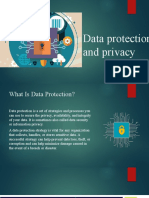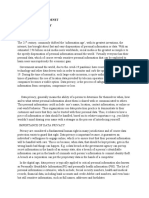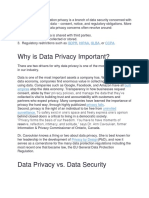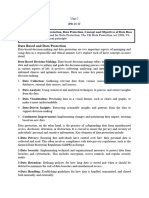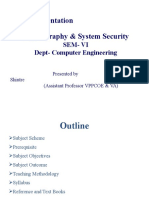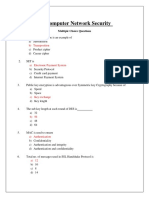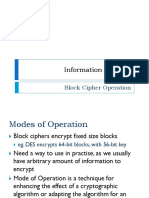0% found this document useful (0 votes)
58 views18 pagesData Protection and Privacy
Data protection and privacy involve safeguarding sensitive information, with data protection focusing on the tools and policies to restrict access, while data privacy defines who can access that data. Key principles include data availability, lifecycle management, and compliance with regulations that vary by jurisdiction. Effective data protection practices include automated discovery tools, encryption, identity management, and secure data erasure methods.
Uploaded by
rodgmutai00Copyright
© © All Rights Reserved
We take content rights seriously. If you suspect this is your content, claim it here.
Available Formats
Download as PPTX, PDF, TXT or read online on Scribd
0% found this document useful (0 votes)
58 views18 pagesData Protection and Privacy
Data protection and privacy involve safeguarding sensitive information, with data protection focusing on the tools and policies to restrict access, while data privacy defines who can access that data. Key principles include data availability, lifecycle management, and compliance with regulations that vary by jurisdiction. Effective data protection practices include automated discovery tools, encryption, identity management, and secure data erasure methods.
Uploaded by
rodgmutai00Copyright
© © All Rights Reserved
We take content rights seriously. If you suspect this is your content, claim it here.
Available Formats
Download as PPTX, PDF, TXT or read online on Scribd
/ 18
